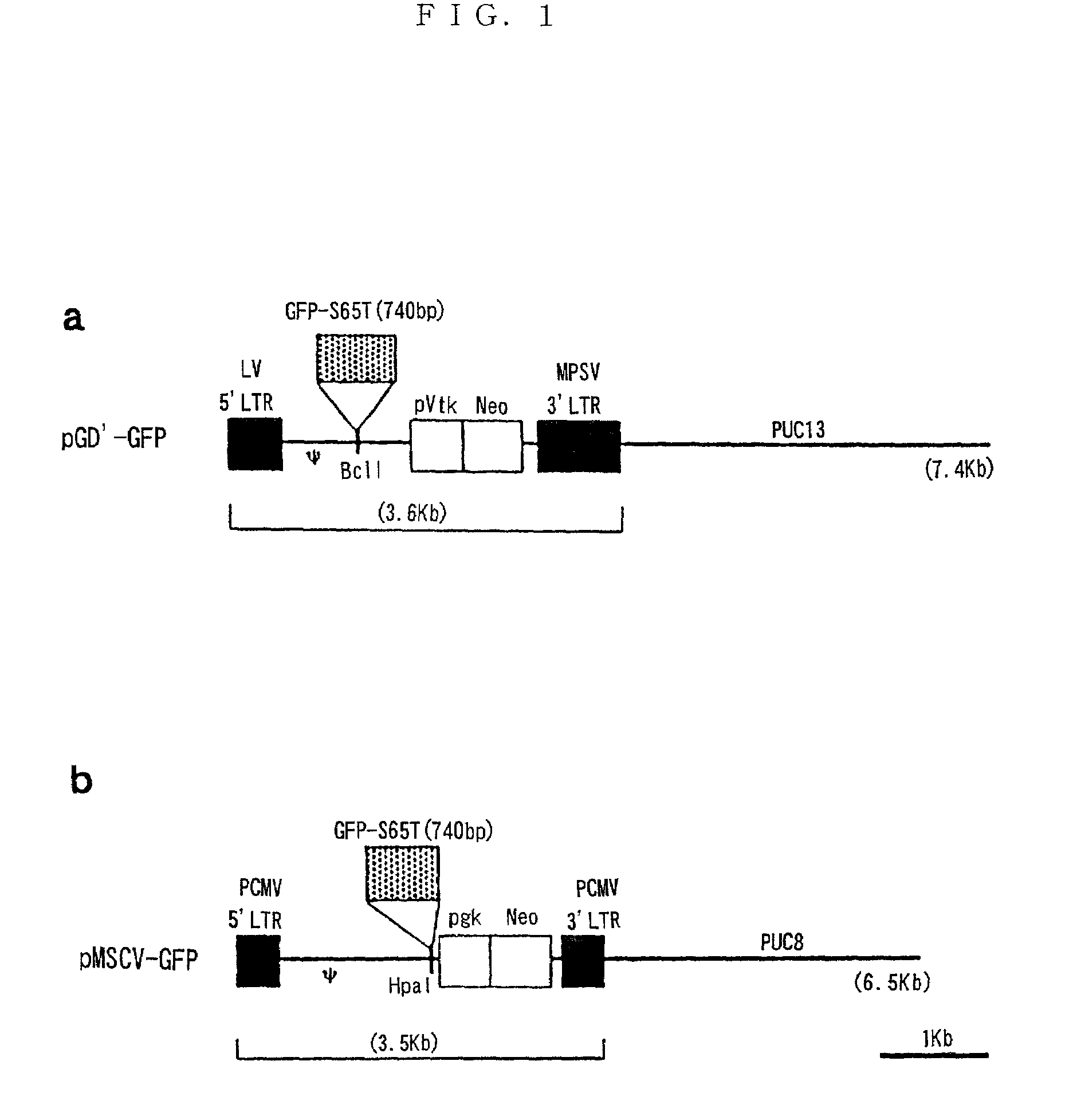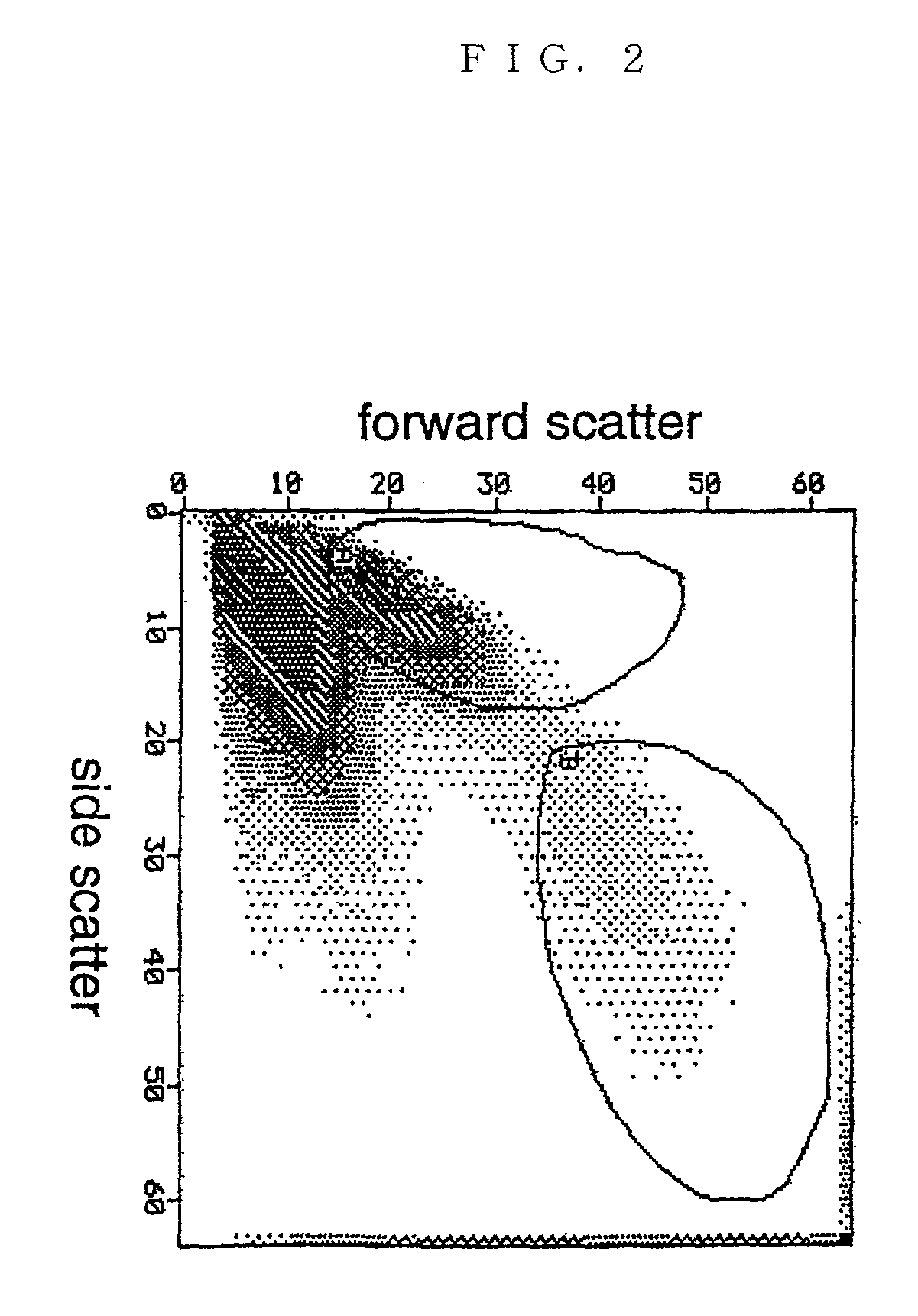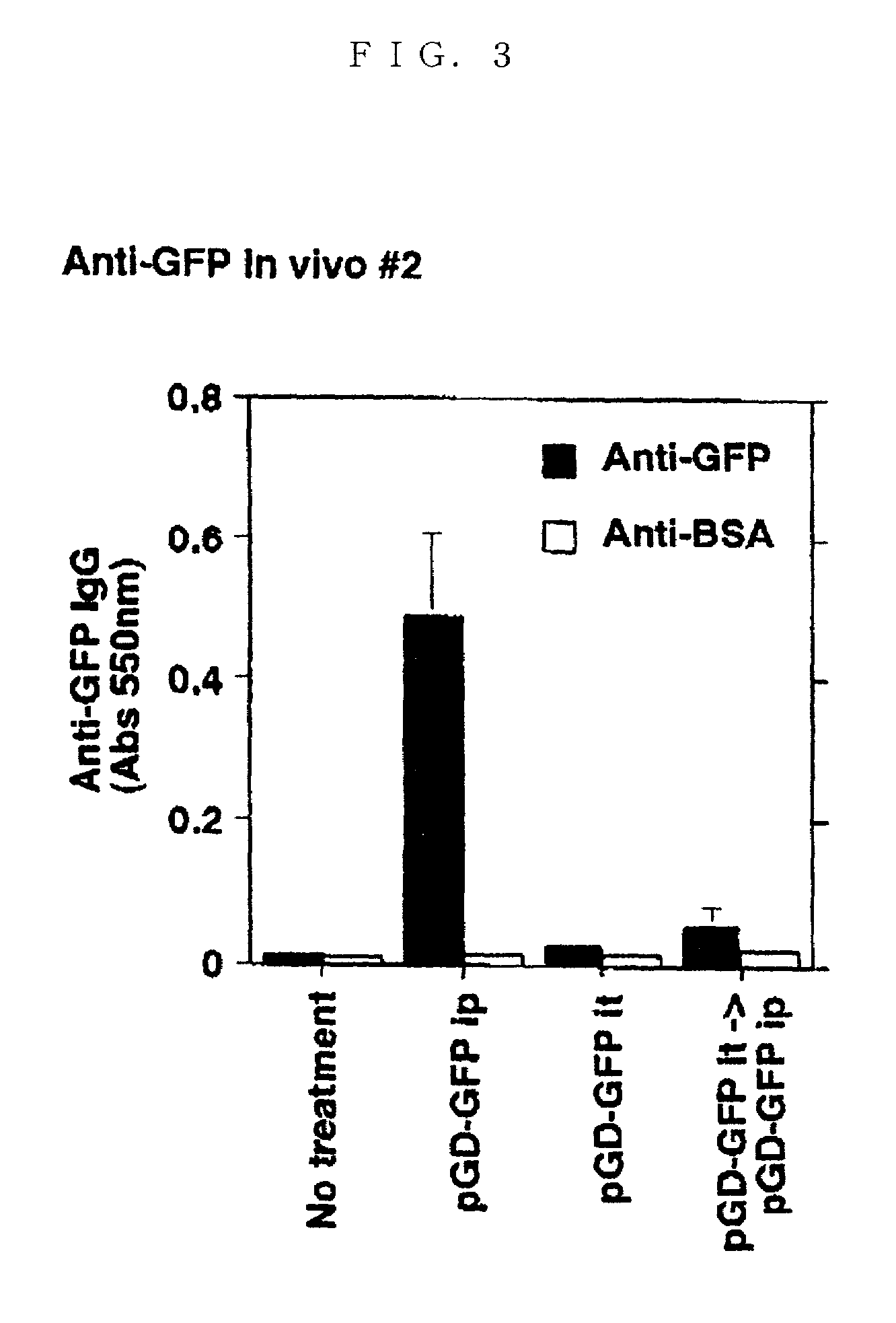Method of acquiring immunological tolerance
a technology of immunological tolerance and immunological response, applied in the field of immunological tolerance, can solve the problems of inability to achieve long-lasting effect and defects, and achieve the effect of avoiding immune respons
- Summary
- Abstract
- Description
- Claims
- Application Information
AI Technical Summary
Benefits of technology
Problems solved by technology
Method used
Image
Examples
embodiment 1
Preparation of Culture Solution
[0024]Culture solution (10% FCS-RPMI1640) was prepared by adding 10% fetal calf serum (FCS), which was pre-treated for 30 min at 56° C., to RPMI1640 [a medium including at the final concentration, 50 μM 2-mercaptoethanol (Sigma Chemicals), 10 mM HEPES (Gibco BRL), 2 mM L-glutamine (Gibco BRL), 1×non-essential amino acids (Gibco BRL), 1 mM sodium pyruvate (Gibco BRL), 100 U / ml penicillin (Gibco BRL), and 100 μg / ml streptomycin (Gibco BRL)]. All of the procedures were performed under aseptic conditions in a clean hood.
embodiment 2
Harvest of Mouse Fetal Thymus Lobes
[0025]Mice of pregnant day 15 or 16 were killed by cervical dislocation. Abdomens of mice were wiped with 70% ethanol, then fetus-filled uteri were taken out and placed on 100-mm sterilized dish. The fetuses were taken out from uteri and transferred to a 100-mm sterilized dish containing 20-30 ml medium of Embodiment 1. The blood and remaining debris were removed by swirling the dish gently for 2 or 3 times. The mice fetus was placed under a microscope. The chest of the fetus was gently opened and two thymus lobes were taken out, and they were placed on a gauze to remove the blood. Finally the mouse fetal thymus lobes were obtained.
embodiment 3
Preparation of Culture Wells
[0026]A piece of sterilized Helistat sponge (Colla-Tec, Inc., Plainsboro, N.J. 08536) was placed in a culture well of a 24-well plate (16 mm diameter, sterilized). The culture well was added 1 ml medium of Embodiment 1. The smooth side of the sponge piece was faced up and a sterile PC (policarbonate) filter membrane (Costar, Nucleopore Corp. PC membrane, #110409, 113 mm diameter) was placed on the sponge. The filter membrane was flipped with forceps so that the both sides of the filter membrane were completely wet with the medium, subsequently 0.5 ml of the medium was gently removed from the well. The final medium was prepared to be 0.5 ml per well.
PUM
 Login to View More
Login to View More Abstract
Description
Claims
Application Information
 Login to View More
Login to View More - R&D
- Intellectual Property
- Life Sciences
- Materials
- Tech Scout
- Unparalleled Data Quality
- Higher Quality Content
- 60% Fewer Hallucinations
Browse by: Latest US Patents, China's latest patents, Technical Efficacy Thesaurus, Application Domain, Technology Topic, Popular Technical Reports.
© 2025 PatSnap. All rights reserved.Legal|Privacy policy|Modern Slavery Act Transparency Statement|Sitemap|About US| Contact US: help@patsnap.com



